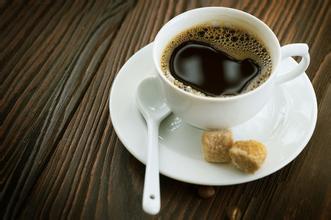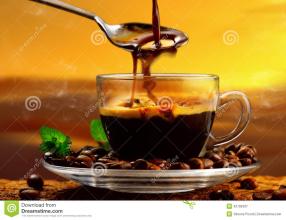Taste smooth, high acidity of Mexico Aldu Mara coffee flavor manor introduction
The Teotihuacan civilization (Teotihuac á n) began around 200 BC, about in the middle of what is now Mexico, and was born after the demise of the Olmec civilization, about the same time as the Mayan civilization. the Teotihuacan people built a city of about 50,000 people between the first year of AD and 150, making it the earliest urban settlement in the whole American region, with many pyramids. However, unlike the genealogical context of other ancient Indian civilizations, the origin of the Teotihuacans is still an unsolved mystery, and no one can confirm that the civilization had written and documented it. Today, we know about the existence of this civilization, not only because they have left behind huge relics for analysis and proof, but also because some other surrounding civilizations of their time mentioned things about the Teotihuacans in their books or paintings. it's another key to reference. The Teotihuacans did not call themselves by this name, which was used by the Toltec, a successor civilization that existed in the region after the demise of the civilization, to call their predecessors the Nahuatl (a native Indian language of central Mexico), meaning "the land of man made by the gods". Although the ancient civilization disappeared long ago in the Toltek and even in the later Aztec era, they still regarded the ancient city where the Teotihuacan once lived as a shrine, hence the name.
High quality beans: Aldu Mara, Mexico.
Taste characteristics: large particles, with a strong sweet, sour taste and good aroma.
The best barbecue degree: medium fried or body fried.
It is characterized by a smooth taste, high acidity, medium mellowness and a slightly nutty finish. Sweet, sour and bitter are neutral and suitable.
The taste is sour, special and elegant. Although the professionalism of Brazilian coffee is of little value, it is very suitable for blending. Because of the huge production of coffee, the price is not very expensive. The aromas of chocolate and cinnamon are mixed together to give off the smell of desert. Tasting such a cup of coffee, you seem to be walking through the gray-green cactus in the Mexican desert.
The most famous alcoholic drink in Mexico is tequila (Tequila). When Mexicans drink tequila, they lick a little salt on the tip of their tongue and then swallow the wine in a small glass. Tequila is a strong wine, the Mexican coffee made by adding this wine is very good, if you have enough courage, you might as well give it a try.
Tequila Mexican coffee and non-alcoholic Mexican coffee is basically true, but first pour a small cup of tequila at the bottom of the cup, and then pour milk and coffee, preferably decorated with cream and cinnamon due to geographical and climatic reasons, the Mexican coffee growing area is close to Guatemala, and the production classification belongs to the Central American type. The main producing areas are: Kolabegu, Australia Aluca states, the products are mostly washed beans produced in the highlands, with good aroma and sour taste, the grade is divided into three categories according to altitude: Aldura (219m-1280 m), Prima. Rabe Society (853-1006 m) Puine. Raba Society (640-762 m). Coffee beans are mainly exported to the United States. It is characterized by a smooth taste, high acidity, medium mellowness and a slightly nutty finish. Sweet, sour and bitter are neutral, moderately sour, special and elegant.
Mexicans are enthusiastic and optimistic, and the chocolates in Mexican coffee perfectly reflect this. There are different methods of Mexican coffee, but the main difference is whether it contains alcohol or not. let's first introduce the practice of non-alcohol.
Heat a cup of milk, a teaspoon of cinnamon powder and a teaspoon of vanilla powder in a pot. Keep it at medium temperature. The heat is not too high. The milk must not boil. Then add the cocoa powder, fully dissolve and stir well. If you are particularly fond of chocolate, you can use chocolate paste instead of cocoa powder and milk.
Let the milk dry for about 5 minutes, wait until the milk is slightly cool, then pour into the prepared coffee, decorate the coffee surface with cold cream, then decorate with a piece of cinnamon, and the Mexican coffee is ready.
The aromas of chocolate and cinnamon blend together to give off the smell of desert. Tasting such a cup of coffee, you seem to be walking through the gray-green cactus in the Mexican desert. It's a very interesting experience.

Important Notice :
前街咖啡 FrontStreet Coffee has moved to new addredd:
FrontStreet Coffee Address: 315,Donghua East Road,GuangZhou
Tel:020 38364473
- Prev

An introduction to the characteristics of the fresh, elegant and full-grained coffee flavor manor in Santo Domingo, Dominica.
At the beginning of the 17th century, when French, Dutch and British pirates were operating in the west of Hispaniola, France began to allow farmers and merchants to gradually colonize the western part of the Spanish island, which was blocked by mountains on the island. It didn't attract the attention of the Spaniards in the east. [3] in 1677, about 4,000 French lived in 11 villages in the west of the island. In 1697, France and
- Next

Introduction to the varieties of flavor and taste in the Kasha Coffee Manor in Panama
Coffee was first brought to Panama by European settlers in the 19th century. In the past, Panamanian coffee did not have a good reputation, and its output was only 1 / 10 of that of its neighbor Costa Rica, but now the coffee industry's focus on boutique coffee has made Panama more and more interested in growing coffee. Panama's geographical advantage is that it has a lot of distinguishing microclimate areas suitable for coffee.
Related
- Detailed explanation of Jadeite planting Land in Panamanian Jadeite Manor introduction to the grading system of Jadeite competitive bidding, Red bid, Green bid and Rose Summer
- Story of Coffee planting in Brenka region of Costa Rica Stonehenge Manor anaerobic heavy honey treatment of flavor mouth
- What's on the barrel of Blue Mountain Coffee beans?
- Can American coffee also pull flowers? How to use hot American style to pull out a good-looking pattern?
- Can you make a cold extract with coffee beans? What is the right proportion for cold-extracted coffee formula?
- Indonesian PWN Gold Mandrine Coffee Origin Features Flavor How to Chong? Mandolin coffee is American.
- A brief introduction to the flavor characteristics of Brazilian yellow bourbon coffee beans
- What is the effect of different water quality on the flavor of cold-extracted coffee? What kind of water is best for brewing coffee?
- Why do you think of Rose Summer whenever you mention Panamanian coffee?
- Introduction to the characteristics of authentic blue mountain coffee bean producing areas? What is the CIB Coffee Authority in Jamaica?

